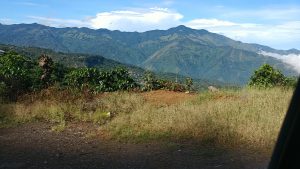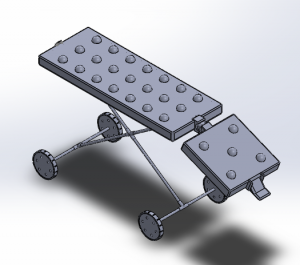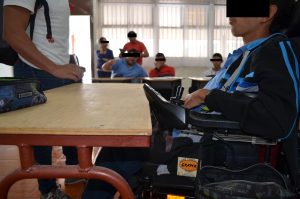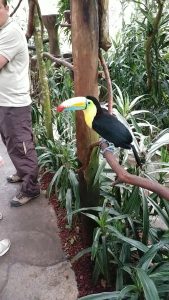First Days in Costa Rica
As I am sure that my fellow colleagues have already emphasized this point, the last 10 days have been both one of the most intense and rewarding experiences of my academic career. We wasted little time as soon as we landed in Costa Rica. In coordination with Dr. Richardson and TEC (Tecnológico de Costa Rica), one of most prestigious engineering schools in the country, we had a very interesting project proposition placed in front of us. The 8 GMI students were paired up with a few TEC students to work on a project and “find needs”. Paul Fearis, who works in conjunction with Rice and Johns Hopkins had lectured us in preparation for this seemingly vast task. He hammered home the point of “insight informed innovation”, a concept of observing root causes to problems thoroughly before proposing solutions—something we as engineers struggle with.
Needs Finding with TEC Students
My group was tasked with the project of visiting a student with cerebral palsy in the more rural town of San Marcos. We took up a winding road through the mountains of Costa Rica to the student’s school. The school is about what you would expect from a rural school in Costa Rica—unleveled concrete, corrugated steel roofs, chalkboards and outdated furniture, yet there was this student who emitted so much energy and joy that I forgot about the environment around me. He was intelligent, funny, and very outgoing and if not for his cerebral palsy, would be enjoying life to the fullest. He was confined to a wheelchair in a setting where there was not enough room for him to maneuver. On rainy days, he would sometimes lose control of his wheelchair altogether. After meeting with his teachers, classmates, and parents, we as a group continued with our needs finding and articulated what we thought were major problems for the student. The TEC students will continue to pursue the project, but the GMI students had diverged to continue working on needs finding in other locations.

Drive to San Marcos
Hospital Observations
The Rice students had the opportunity to visit a few hospitals near the San Jose area and watch different medical procedures. Two procedures that my group of 4 were able to see included a bone marrow aspiration and a heart catheter examination of a patient who experienced chest pains. There are a few things that this experience taught me:
- The application of certain methods can vary from doctor to doctor.
- Finding major issues in healthcare doesn’t necessarily come directly from a person, sometimes it can come from just simple observation.
- There is still room for improvement in the most fundamental areas of medicine.
Although Costa Rican public hospitals do not have the resources and access to technology that U.S. hospitals do, the life-expectancy of a Costa Rican citizen is higher than their U.S. counterparts. This concept was absolutely baffling to me at first, but after being immersed in observations, I now see why this is the case. Preventative care is a point of emphasis here, and there are very talented medical professionals to ensure that proper measures are taken.
Short Course in Innovation at FOD
The last few days have been focused on bringing a product from concept to a low-fidelity prototype in a matter of four days. This course was held at Fundación Omar Dengo and consisted of the GMI students and Costa Rican students who were interested in medical device innovation. Once again, our team was divided into teams and instructed to solve a specific problem. Stemming from my visit with the cerebral palsy student, I wanted my group to focus on developing a concept that could help a caregiver lift a child with cerebral palsy in and out of their wheelchair to mitigate the risk of injury. Our team spent the first day team-building and understanding the fundamental mechanisms of our problem.
The next day Dr. Richardson and Dr. Wettergreen (also from Rice) gave a crash course over various aspects of device innovation. At the end of the day, we had a friendly competition with the other groups to see who could build the best bijaj (a three-wheeled taxi that is used in Ethiopia) out of material you would find at an arts and crafts store. Our team finished in a solid 3rd place. The next days were spent on prototyping our idea out of the same materials used for the bijaj and finishing up a presentation that we will be giving Monday (6/12). These are some of the things I learned from this course:
- A “low-fidelity” prototype is really useful in understanding the concepts of a device and relating that information to other people.
- IP strategy for a product can be complex.
- Being thorough and clear as a team facilitator is essential, especially when group members may not be fluent in English.
 CAD Drawing of FOD Project Concept
CAD Drawing of FOD Project Concept
It’s not all work
Costa Rica is a beautiful place. With as hectic of a schedule as we’ve had in last 10 days, it is always refreshing and relaxing to look outside and get lost in awe of your surroundings. So far, we’ve been able to see a fútbol match (which I think my ears are still ringing from), hike through La Paz (yes, there are toucans and sloths here) and get to know more about the Costa Rican culture. Although it is hard work, these last 10 days have been some of the most memorable! We will be heading out to Guanacaste tomorrow, which I expect to be just as awesome of an experience.


